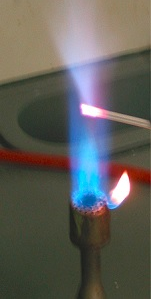
- Chemistry Notes for UPSC IAS Prelims (Part II)
- Chemistry - Home
- Chemistry - Introduction
- Chemistry - Branches
- Chemistry - Radioactivity
- Chemistry - Nuclear Energy
- Chemistry - Metals
- Chemistry - Metallurgy
- Chemistry - Sodium
- Chemistry - Calcium
- Chemistry - Aluminum
- Chemistry - Magnesium
- Chemistry - Maganese
- Chemistry - Iron
- Chemistry - Copper
- Chemistry - Silver
- Chemistry - Gold
- Chemistry - Platinum
- Chemistry - Zinc
- Chemistry - Mercury
- Chemistry - Plutonium
- Chemistry - Uranium
- Chemistry - Lead
- Chemistry - Thorium
- Chemistry - Hydrogen
- Chemistry - Helium
- Chemistry - Oxygen
- Chemistry - Carbon
- Chemistry - Nitrogen
- Chemistry - Chemical Law
- Chemistry - Discovery of Elements
- Elements With Their Valence
- Elements With Their Atomic Number
- Chemistry - Nobel Prize
Chemistry - Lead
Introduction
Lead is a heavy chemical element (metal) i.e. it has high density.
The symbol of lead is ‘Pb’ and atomic number is ‘82.’

Lead has tendency to bond itself; likewise, it can form chains, bonds, rings, and polyhedral structures.
Salient Features of Lead
Lead is soft and malleable metal; it has relatively low melting point.
Lead is relatively unreactive element and it has tendency to form covenant bond.
When lead is cut, it appears bluish-white tint.
While burning, lead gives a bluish-white flame (see the image given below).

Compounds of lead are typically found in the +2 oxidation state.
Occurrence of Lead
Lead is known to the prehistoric people of Western Asia.
Lead is found in the earth’s crust; it is rarely found deep of the earth.
Lead is usually found in combination with sulfur.
Galena is the main lead-bearing mineral, mostly found with zinc ores.
Alloys of Lead
Following are the major alloys of lead −
Molybdochalkos (copper)
Solder (tin)
Terne (tin)
Compounds of Lead
Following are the major compounds of lead −
Lead monoxide - PbO
Lead dioxide - PbO2
Uses of Lead
Lead has been used in making bullets for hundreds of years.
Lead is commonly used as a protective sheath for the underwater cables (only because it has the property of corrosion resistance).
Lead sheets are also used as architectural metals especially in roofing material.
Lead is also used in acid batteries.
Lead compounds are commonly as coloring agents and semiconductors.
Lead compounds are also used in plastic, candles, glass, etc.
Lead is commonly used in the polyvinyl chloride (i.e. used in coating of electrical cords).
Pre-caution
Presence of lead (in excessive quality) in the body may cause severe damage to the brain and kidneys; it may even cause death lastly.
To Continue Learning Please Login